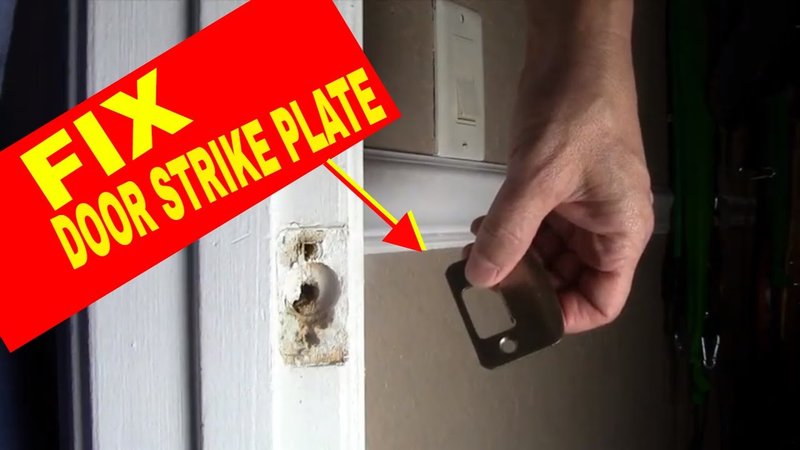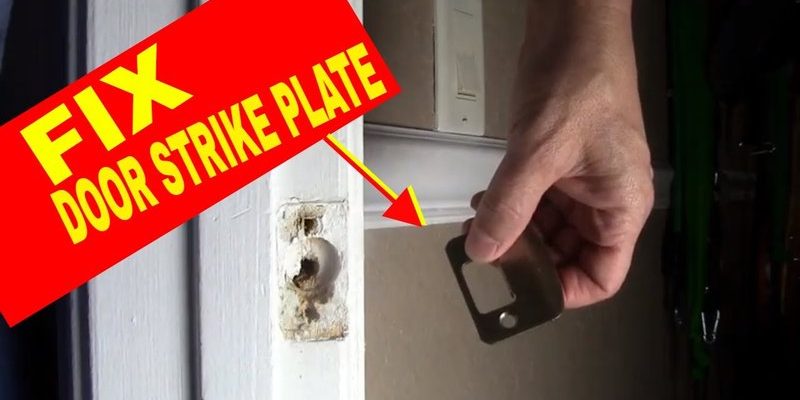
The good news? Fixing a loose door latch faceplate is often easier than it seems. With a few basic tools and a little bit of patience, you can tackle this problem on your own. Whether your door is from a well-known brand like Schlage or a less familiar one, the steps are pretty similar. Let’s dive into how you can make that faceplate feel good as new.
Why Your Door Latch Faceplate Might Be Loose
First, let’s cover the basics. Why does this happen in the first place? Over time, doors can shift due to temperature changes, humidity, or just regular wear and tear. Imagine your door is like a well-loved book; it may not be perfect, but it tells a great story. The more you open and close it, the more stress it endures. This stress can loosen screws holding the faceplate in place.
Another reason could be improper installation. If the door was installed quickly or without proper care, it might not be as sturdy as it should be. You know how a chair feels when one leg is shorter than the others? It wobbles uncomfortably. When a faceplate isn’t fitted correctly, it can lead to similar issues. Finally, moisture can also play a role. If your door is exposed to water, it can warp, affecting how everything aligns.
Tools You’ll Need for the Job
Before diving into repairs, you’ll need a few tools. Think of them as your trusty sidekicks on this mission. Here’s a quick list:
- Screwdriver: A flathead or Phillips, depending on your screws.
- Wood glue: Useful if the screw holes are stripped.
- Wood filler: Handy if you need to fill in gaps.
- Drill: For any deeper fixes.
These tools are often common around the house, but if you don’t have them, they’re easy to find at your local hardware store. Having the right tools ready can make the job smoother, just like having a map before a road trip.
How to Tighten a Loose Door Latch Faceplate
Now that you’ve got your tools ready, let’s get into the nitty-gritty of repairing that faceplate.
1. Remove the Faceplate: Start by taking out the screws holding the faceplate. Be careful not to strip them; a good screwdriver will help.
2. Check for Damage: Once the faceplate is off, look for any damage. Are the screw holes stripped? If they are, you might need to use wood filler to rebuild them.
3. Reattach the Faceplate: Place the faceplate back and align it properly. Use the screws to tighten it but don’t go overboard—too much pressure can cause damage.
This process might sound easy, but sometimes, little hiccups come up. Maybe the screws won’t catch, or the faceplate still feels loose. Don’t worry; these issues can often be fixed with a bit of patience and the right approach.
Dealing with Stripped Screws
If you find the screws won’t hold, you’re dealing with stripped holes. It’s like trying to fit a square peg into a round hole—frustrating and ineffective. Here’s how to make it work:
– Wood Filler Method: Fill the hole with wood filler and let it cure. Once it’s set, drill a new pilot hole for the screw. This gives you a fresh start.
– Wood Dowels: If the hole is quite damaged, you could use wooden dowels. Insert a dowel into the hole, cut it flush with the surface, then drill a new hole for the screw. It’s like giving your door a mini makeover!
These methods may sound complex, but with patience, you’ll find they aren’t too daunting.
When to Replace the Faceplate
Sometimes, despite your best efforts, the faceplate may be beyond repair. If it’s bent, rusted, or not fitting correctly, consider replacing it. Here’s how to determine if a replacement is necessary:
– Visible Damage: If the plate shows significant wear, like rust or bending, it’s likely time for a fresh one.
– Continual Issues: If you find yourself tightening the screws repeatedly, the problem may not be the screws at all; it could be the faceplate itself.
Replacing it can bring new life to your door—just like upgrading those old shoes that pinched your toes.
Preventative Maintenance for Durability
Once you’ve made your repairs, consider some preventative measures to keep everything in check. Just like regular oil changes can keep your car running smoothly, a few simple steps can keep your door latch faceplate in top shape:
– Regular Checks: Set a reminder to check the screws every few months. It’s a small task that can prevent larger issues.
– Control Humidity: If you live in a humid area, consider using a dehumidifier. Keeping your door’s environment stable can limit damage over time.
– Quality Products: Invest in high-quality screws and faceplates. They might cost more upfront but can save you hassle in the long run.
Taking these steps can extend the life of your door and keep everything running smoothly.
Final Thoughts on Repairing a Door Latch Faceplate
Repairing a door latch faceplate that’s coming loose might seem like a small task, but it plays a huge role in the functionality of your door. With just a few tools, a little bit of time, and some patience, you can make that door feel secure again. Honestly, it’s satisfying to fix something yourself.
So, the next time you hear that wiggle, don’t ignore it. Grab your tools, follow these steps, and let that door latch faceplate stand tall once more. You’ll be glad you did!
